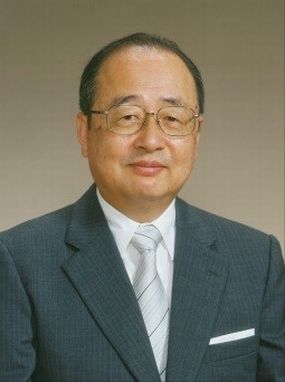IAC News
IAC News No.57, July 2017
Japan Society of Civil Engineers International Activities Center July 3, 2017 IAC News No.57
【Alumni of DOBOKU Series】
“Civil Engineering Can be a Bridge Between Japan, China, and the World!”
Xianfeng Ma
Associate Professor, Tongji University, China
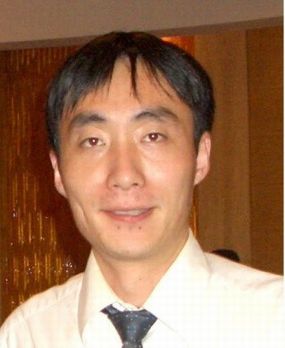
Xianfeng Ma
Study in Japan
My study in Japan started in 1997 when I was enrolled as an exchange student at Osaka City University due to a student exchange program with my home university Tongji University in Shanghai, China. I continued my studies at Tokushima University the following year and then worked as an assistant professor there for more than two years before shifting to Geo-Research Institute based in Osaka as a researcher. During my six-year stay in Japan, I was privileged to have the chance to study geotechnical engineering, communicate with the local people and make friends, enjoy Japanese culture, about which I am very pleased to report and share. The title of this report was actually inspired by the lyrics of the anthem of the Department of Civil Engineering in Tokushima University, which encourages civil engineering students to aim high and think big even as to dream of building a bridge between Japan and China.
When it comes to communication in civil engineering between Japan and China, the history is so long that it can be dated back to Sui or Tang dynasty which was more than 1000 years ago when Ganjin Monk and Master Koubou introduced ancient Chinese construction technologies into Japanese society. The history contains numerous activities and events, with which personal experiences can never be compared. However, I am sure my beginning of studying in Japan was somehow inspired by such a history so that I think maybe I could bring back some new technologies from Japan as a result.
On Day 1, after I arrived in Osaka, I got a real feeling of the high level of Japanese civil engineering. Seeing from the airplane when approaching Kansai International Airport, the reclaimed island seemed to be floating in the blue sea of Osaka Bay. The structures on the island and the bridge connecting the land and the airport were both beautiful and futuristic to me. After my supervisor, Professor Akitoshi Mochizuki, came to pick me up at the airport, I was deeply impressed once again on the way to the city center, seeing the advanced highway system, congested buildings and infrastructures, all looked shiny and new.
In the soil mechanics laboratory in Osaka City University, I was lucky enough to meet outstanding academic staff and research students who had very unique characters in their pursuit of knowledge and I enjoyed studying and living there. I also understood that the geotechnical centrifuge in this lab, developed by Professor Masato Mikasa in order to verify his consolidation theory on soft clay, was actually the first one in Japan. A well-known episode is that coincidently, Prof. Andrew Schofield independently developed a similar facility at almost the same time in the UK, which is almost on the other side of the planet. It is more interesting, as a later development in 2008, that I actually got a chance to study at Cambridge University for one year which enabled me to experience both of the two legendary centrifuge facilities. During my time in Osaka City University, there were also hot discussions in various seminars related to constitutive model research, effective stress principle and total stress method, all of which are fundamental researches for practice in geotechnical engineering. As a result of such experiences, I could understand the reason why civil engineering in Japan is so advanced.
When my advisor, Prof. Mochizuki, shifted to Tokushima University, I also moved to Tokushima city from my second year in Japan, a city featured by beautiful mountains and a long coastline. In their geotechnical engineering group, a lot of activities had been carried out related to development of centrifuge and shear test apparatus and numerical analysis using FEM, the involvement of which benefitted me a lot. In addition, I joined a number of local activities, the most important one of which is Awa Odori dance festival, a famous and traditional matsuri (festival) in Japan. The experience of Japanese culture and good relationship with Japanese students also helped me enjoy my time in Tokushima during my four-year stay there.
My PhD thesis was on the seismic response of underground structures (including the analysis of the failure mechanism of Daikai subway station which collapsed in the 1995 Kobe Earthquake), which is one of many advanced fields in Japan. However, at the time, that topic was not paid attention to back in China and such researches had yet to be carried out. It was my Chinese supervisor, Prof. Linde Yang, who advised me to take it up as my thesis theme, and considering the later development of research in China, I appreciate him very much for his good selection of the topic for my PhD study, and thanks should be given to him for his foresight.
In 2002, I got a chance to further my research in the Geo-Research Institute in Osaka under the president Yoshinori Iwasaki. I carried on studies about excavation works using FEM. During that time, I also joined in a project commissioned to GRI which is on the risk assessment of the Yangtze-River underwater tunnel in Shanghai. Also, I visited Naruo Research center of Toyo Construction group and gained some experiences with their centrifuge modeling for a short time.
Back to China
In 2003, upon the recommendation of Prof. Hehua Zhua, I came back Tongji Unviersity and joined the Department of Geotechnical Engineering, working on the construction of a geotechnical centrifuge laboratory. Centrifuge modeling in China started in the 1980s and no more than 10 facilities had been built up until 2003. With the help of Prof. Mochizuki, Prof. Naotoshi Takada, and Mr. Tatsuo Miyake, who had a lot of experiences in centrifuge modelling and worked as external advisors for Tongji University, the facility was completed at the end of 2006 and has been in operation since that time serving for the research of all academic staff in the department. The development of the centrifuge at Tongji University kicked off a new boom of centrifuge construction in Chinese universities. Last November, we hosted the 2nd Asian Conference on Physical Modeling in Geotechnics (Asiafuge2016), and luckily attracted 120 attendees, one third of whom were from Japan.
In the time of my returning to China, the construction of metro network in the cities of Beijing, Shanghai etc. started to see a speedy development, as well as some accidents as a result of failures in risk management. Among the accidents, the collapse of the Shanghai Metro Line No. 4 has been reported widely, featured by the complexities and difficulties of restoration of structures. In the repair works, advice from Japanese experts, headed by Mr. Tadashi Hashimoto of the Geo-Research Institute played a very important role, and Japanese technology and experience were introduced and contributed to the successful restoration work. While participating in the whole process of communication between Chinese and Japanese experts relating to this project, I saw Japanese technology and experience in civil engineering practice earned trust among local engineers. At present, the metro system is still under construction, especially in big cities like Beijing and Shanghai. Also, urban infrastructures and underground space constructions are sure to continue, thus there will be much chance and many places for new technologies developed in Japan to be introduced in China and contribute a lot to these constructions.
Envisioning the future
One thing I came up with in my mind during the time I spent studying in Japan is that technology should be shared beyond regions and countries, developed in the way of communication and collaboration. Recently, there has been a lot of communications and collaborations between China and Japan, i.e. China-Japan Symposium on geotechnical engineering, China-Japan Symposium on shield tunneling technology (chaired by Prof. Jun Koizumi of Waseda University), student workshop between Nagasaki University and Tongji University, many of which I am still involved in. Furthermore, it is also necessary to establish more communication mechanisms among Asian researchers and engineers, and with the progress of globalization, it is in the high interests of the civil engineering community to develop communication platforms both regionally and on a worldwide scale. With this in mind, civil engineering can be a bridge between countries and beyond. Finally, I would like to take this opportunity to give my sincere thanks particularly to my supervisor, Professor Mochizuki, without whom all these things could not have happened. I also want to thank all the people I met during my study and work in Japan who were very helpful and supportive without reservation. Thank you very much.
Profile: He came to Japan in October 1997, and studied at Osaka City University and Tokushima University, completed his PhD dissertation at Tokushima University (degree was awarded from his home Tongji University). He worked as an assistant professor at Tokushima University and an researcher at Geo-Research Institute and returned to China in 2003. Now he is an associate professor at Tongji University and the head of geotechnical centrifuge laboratory.
|
《Column》 Akitoshi Mochizuki, Professor Emeritus, Tokushima University
Dr. Cai Min, who was the first international PhD student, who came from Tongji Univ., P. R. China in my laboratory, and opened a way for an academic exchange program between Osaka City University and Tongji University in 1991. The agreement allowed Mr. Ma Xianfeng, a student of the latter university, to come to study geotechnical engineering in Japan in 1997 supported by scholarships from the Heiwa Nakajima Foundation and the Foundation of Wesco Co., Ltd.. After he studied at Osaka City University for six months, he moved to Tokushima University following me as I got a professor position at that institute. He carried out researches on the failure mechanism of Daikai underground station (Kobe kosoku line of Hanshin Railways) which was badly damaged during the Kobe earthquake of 1995. He introduced the new concept "relative displacement between structures" in the failure mechanism, and he succeeded in explainning the failure process of center columns of the station during the earthquake splendidly. Though a paper on the failure mechanism was presented in China, I believe it would be of great interest to present it here in Japan, too. He completed his PhD dissertation at Tongji University in 2000. After he supported activities of my laboratory for two years as an Assistant Professor, he experienced consultant works at the GRI, Osaka for one year. Then, he received an associate rrofessor poisiton in Tongji University and he returned back to China in order to establish the Geotechnical Centrifuge Center of Tongji University. |
※Alumni of DOBOKU Series is in collaboration with Editorial Committee of JSCE Magazine.
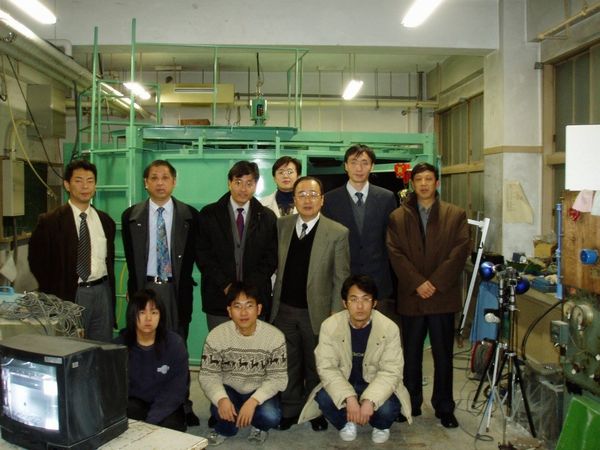
Tongji University delegates (Leader: Prof. Huang Hongwei) visiting to the centrifuge facility at Tokushima University
The JSCE IAC Special Seminar
“The Project of Lyon-Turin Railway Tunnel”
1 Introduction
“The Mont Cenis Base Tunnel & the Lyon-Turin railway link” was reported by Tunnel Euralpin Lyon-Turin (TELT), which is a public organization of the project management, on April 5th, as a JSCE IAC Special Seminar. Mr. Jean-Fracois Corté, Chair of TELT Commission, Mr. Marurizio Bufalini, COO, and Mr. Alessandro Jannetti, CFO, and other two executives of TELT presented following topics: 1) Organization of TELT, 2) Main points of the project, 3) Comparison of the famous Gotthard Base Tunnel and other base tunnels in the Alps. About 50 participants had a significant 2-hour seminar including Q&A sessions, understanding importance of railway link project in EU.
2 Organization of TELT
The Lyon-Turin Railway Link project had been recognized its importance for French and Italy, and the Mont Cenis Base Tunnel had been a key project for the railway link through the Alps. The two governments made an agreement for the promotion of the project, and a new organization which was responsible for the realization and management of the new railway infrastructure was founded in 2001 by two countries’ public funding. Then the organization was named as TELT in 2015.
There are 110 staff in TELT, consisting of professionals in engineering, finance, contract, and general affairs; 56 persons come from French and 54 from Italy, 55 persons are males and 55 are females.
The project was approved as an EU co-funding project due to a important and significant railway link in the major southern nations of the EU. TELT will plan to launch the tendering process for the main construction works in 2018, and the railway is scheduled to open between 2029-2030.
This visit and presentations were planned to promote the understanding of the project and to call for tenders among Japanese construction firms and related firms and engineers.
3 Main points of the project
* Length of the railway link between Lyon and Turin: 270km
* Length of the tunnel (Mont Cenis Base Tunnel): 57.5km (78% of the tunnel is located in France and 22% in Italy)
* Section of the tunnel: two single truck tunnels
* Vehicles: high-speed passenger train, regional trains, and freight trains, maximum operating speed will be 220km/h
* Tunnel construction costs: 8.6 billion euros (euro 2012, constant prices)
* Financing: total costs are burdened by EU 40%, Italy 35%, and France 25%.
* Periods of studies and design: 2014-2018
* Planned schedules: civil works in 2018-2027; installations in 2026-2028; operational testing in 2029; operation start-up in 2030
* Geological overview: the Alps in which the tunnel is located, were formed as a result of the collision of the African and European tectonic plates. Due to this geological characteristic, the geological zones of the project are not clearly separated, i.e., the tunnel is built in a geologically complex region. Based on RMR Index (Bieniawski 1989), the quality of rock masses is excellent: reaching 90, and very abrasive, strong and hard (250Mpa uniaxial compressive strength).
* Excavation methods: TBM (Tunnel Boring Machine) and traditional NATM
* Calls for tenders: 7 lots in France and 6 lots in Italy, and schedules for tenders and approximate contract fee are explained.
4 Comparison between Mont Cenis Base Tunnel and Gotthard Base Tunnel
Gotthard Base Tunnel is a railway base tunnel through the Alps in Switzerland, two single truck tunnels. It opened on 1 June 2016, and full service began on 11 December of the same year. With a route length of 57.09km, it is currently the world’s longest railway tunnel. The Gotthard Base Tunnel is famous in Japan and reported in various news media at the opening ceremony.
A comparison between Mont Cenis Base Tunnel and Gotthard Base Tunnel are explained as the following table.
| Mont Cenis | Gotthard | |
| Construction costs: | 8.6 billion euros | 9.03 billion euros |
| Construction periods: | 2018-2029 (12 years as planning) | 1999-2016 (18 years) |
| Financing: | Public only (EU40%, Italy and France 60%) |
Private and public |
※It was emphasized that Mont Cenis Base Tunnel project was financed by EU.
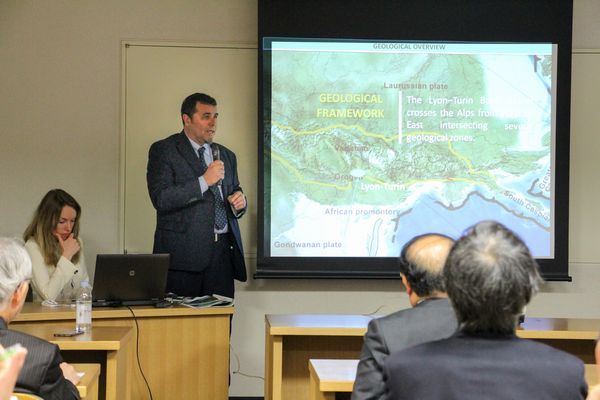
Mr. Bufalini, delivering a presentation on the project
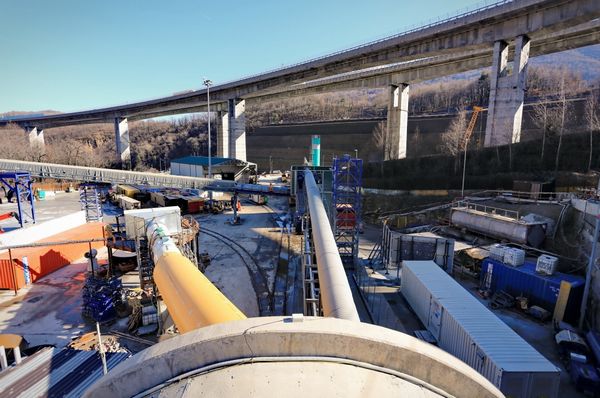
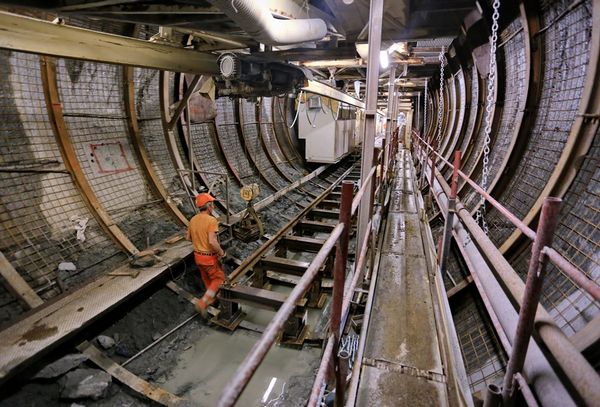
Tunnel construction sites in Maddalena, Italy
2017 Fiscal Year Business Plan
for the International Activities Center
Introduction to the International Affairs Division
As shown in the figure, the International Affairs Division comprises the International Strategy Committee, the International Activities Center, the Task Based Committees and the International Chapter. The Senior Director of the International Affairs Division acts as the Chairperson for the International Strategy Committee with the planning of international activity policies being their chief role.
The International Activities Center consists of five groups concerned with Information Networking, International Communication & Collaboration, Professional Development and Education Program (aka Education), International Student Network and Projects, which all cooperate whilst pursuing their respective activities.
The Committee on the Asian Civil Engineering Coordinating Committee (ACECC) and the Committee on International Scientific Exchange Fund are the two major committees serving the International Affairs Division. The former committee supports the activities of the JSCE within the ACECC, which was established in 1999 with the JSCE being a founder member. The latter was inaugurated in January 1989 and is responsible for the selection of grant recipients from the “JSCE International Scientific Exchange Fund Charitable Trust” and it cooperates with the Research Committee, the JSCE led Technical Committee (TC) within the ACECC and the International Communication & Collaboration Group etc., supporting the international activity of the JSCE in Bilateral / Multilateral Technical and Academic Exchange Support Projects, the establishment of bases overseas and the stimulation of business etc.
The International Chapter comprises nine overseas sections. The overseas sections are made up of both JSCE members and “Associate Members”, newly introduced in April 2016, who reside in the countries and regions where the sections are established.
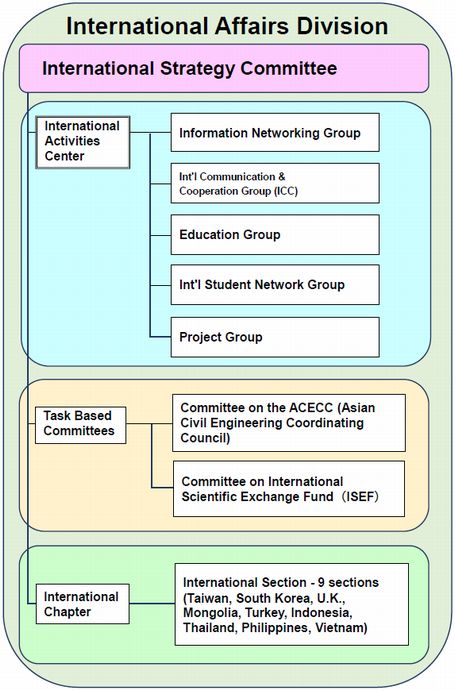
Structure of International Affairs Division
Activities of the International Activities Center
Since its establishment in April 2012, the “International Activities Center”, which aims to support internationalization of the civil engineering community, has been expanding its activities both in Japan and overseas based on the following four policies.
1) Expansion of international networks and implementation of strategic bilateral exchanges
2) Dissemination of information both internationally and domestically
3) Fostering human resources and supporting internationalization within Japan
4) Providing a place to resolve mutual problems
In its sixth year since establishment, each of its groups will continue to work based on their respective action plans with regard to international exchange and collaboration, exchange of information with other countries, improving the skills of engineers and fostering human resources, support for foreign students etc. Additionally, International Round Table Meetings (RTM) etc. will be planned and implemented at annual meetings under the direct management of the International Activities Center.
(1) International Communication & Cooperation activities
Concerning international communication and cooperation activities, bilateral exchanges will be advanced by sending groups of representatives to the overseas academic annual meetings of ASCE, KSCE, CICHE, MACE, PICE etc., as well as collaborating with the Committee on the ACECC and the International Scientific Exchange Fund Management Committee to hold symposia and seminars etc. Further, while strengthening cooperation with overseas academic bodies in the West, we will promote a more multilateral form of international activity.
Concerning the overseas sections, the Associate Members assist in expanding branch activities and increasing interest in Japanese civil engineering in those countries, so we aim to expand associate membership and increase the number of advocates in overseas sections, thereby supporting the formation of people networks. Further, overseas sections work as points of exchange for engineers from the respective countries and those in Japan, and we will support them in expanding the dissemination of information concerning Japanese civil engineering.
Concerning the ACECC, for which the JSCE serves as a secretariat, and looking towards the 8th Civil Engineering Conference in the Asian Region (CECAR 8) to be held in Tokyo in April 2019, for which this society will act as host, the CECAR 8 Organizing Committee established within the JSCE will continue preparations principally through its four subgroups (Planning, General Affairs and Finance, Academia, Events). Further, we will actively aim to secure external funds for the purpose of enhancing the above-written meeting.
(2) Activities for the dissemination of information
Concerning our activities for the dissemination of information, and considering both the needs of members and movements in the civil engineering field, we will maintain “International Activities Center Communications” and our journal “International Activities Center News” as monthly publications, and aim to enhance the contents of the English language website. Further, we will make greater use of Facebook for the timely dissemination of information.
(3) Educational activities
Concerning our educational activities, the “Global Vision Symposium” which presents the current state of the overseas construction business along with overseas enterprises and their strategies, and the “Japanese Civil Engineers the Global Leaders Symposium Series” is growing as core projects of the International Activities Center, and will continue selectively addressing themes with consideration of trends and concerns in the civil engineering community. We will also work on the production of an “Infrastructure Archive”, which was originally begun with the JSCE centennial anniversary project, and which will be presented on the website, introducing actual examples of Japan's international collaborations and contributions to the development of overseas infrastructure.
(4) Support for foreign students
Along with continuing efforts in building a foreign student network, we will hold the “International Summer Symposium”, and arrange corporate briefing sessions and site tours to provide foreign students in Japan with opportunities to present research and exchange information with each other. Many of the miscellaneous activities described above depend on voluntary activities of our valued members, and whilst we are continually reviewing the means to enhance the presence of the JSCE overseas, how to bridge the divide between our ideals and reality is an ongoing issue. We would like to ask all our readers for their understanding and support.
| 2017 JSCE Directors in charge of International Affairs Division | ||||
 Senior Director Dr. Yutaka Sunohara (The Ports and Harbours Association of Japan) |
 Director Dr. Tamon Ueda (Hokkaido Univ.) |
 Director Dr. Hiroshi Katsuchi (Yokohama National Univ.) |
 Director Mr. Masayasu Kayano (Kajima Corp.) |
 Director Mr. Tamio Shimogami (Construction Services in Kinki Region) |
Updates
- Summary of feature articles in JSCE Magazine Vol. 102, No. 7, July 2017 is available on the JSCE website.
http://www.jsce-int.org/pub/magazine - Japanese Civil Engineers the Global Leaders Symposium Series No.10 “the Construction of Vietnam’s Longest Sea-crossing Bridge - Lach Huyen Port Infrastructure Construction Project (Road & Bridge portion) -”will be held on August 3, 2017.
http://committees.jsce.or.jp/kokusai/node/113/ - Five projects introduced in the booklet “TRANSFER OF CIVIL ENGINEERING TECHNOLOGY IN SERVICE” published on the occasion of the 100th year anniversary of JSCE are introduced on the JSCE Website.
http://www.jsce.or.jp/e/archive - “Journal of JSCE” the research paper collections can be viewed on the JSCE website.
- https://www.jstage.jst.go.jp/browse/journalofjsce
- Concrete Committee International Newsletter No. 49
http://www.jsce.or.jp/committee/concrete/e/newsletter/newsletter48/index.html - Disaster Fact Sheet
http://committees.jsce.or.jp/disaster/ - IAC Students and Alumni Network
http://www.jsce-int.org/IAC_network
IAC News Subscription
The IAC News is one of the communication tools to share information and ideas with the members. We would like to invite you, your friends and colleagues to join the communication and to subscribe the IAC News. Please register online: (http://www.jsce-int.org/node/150). We look forward to meeting you.

